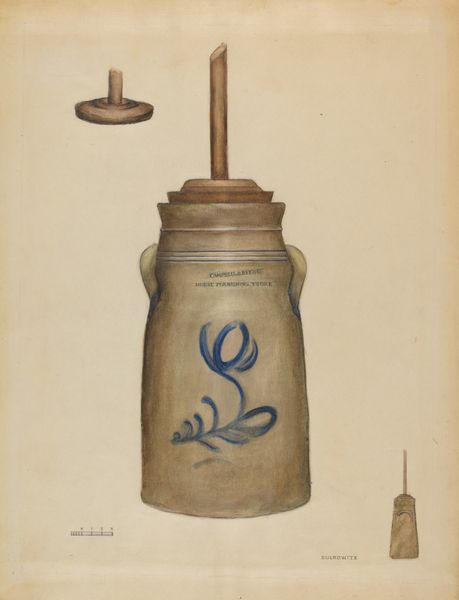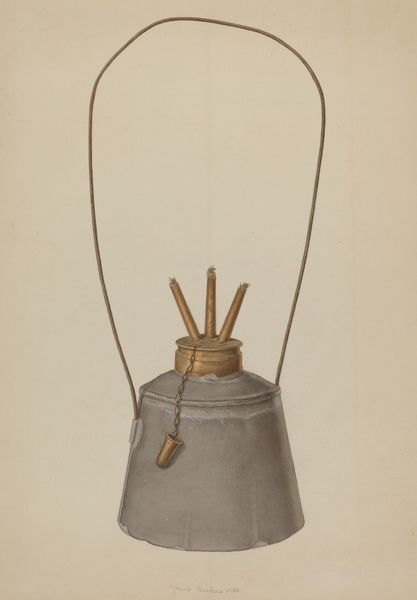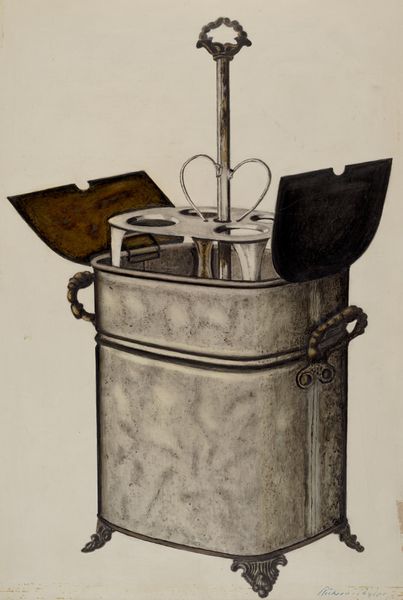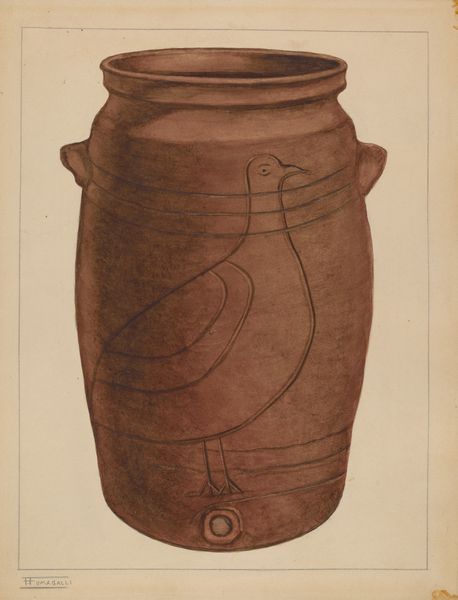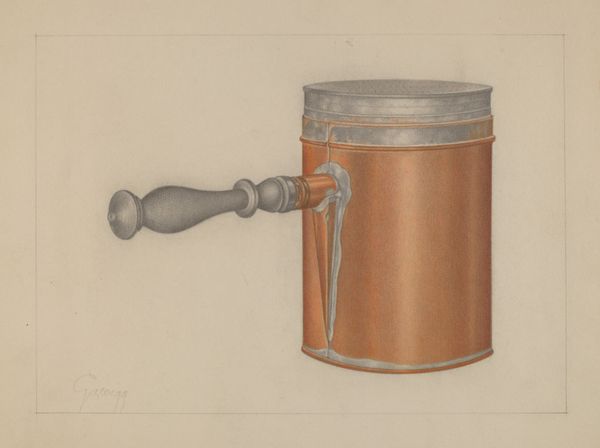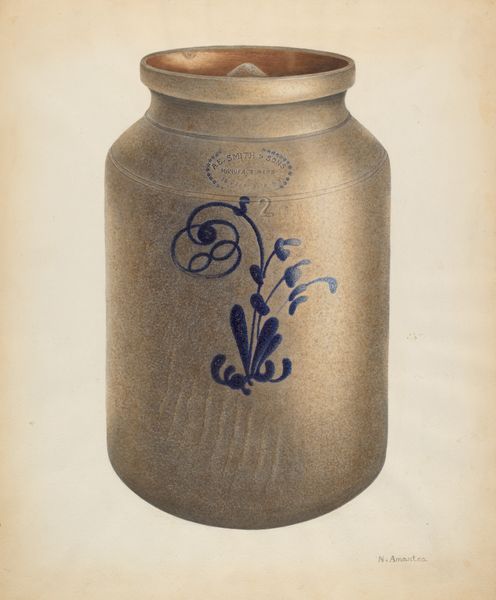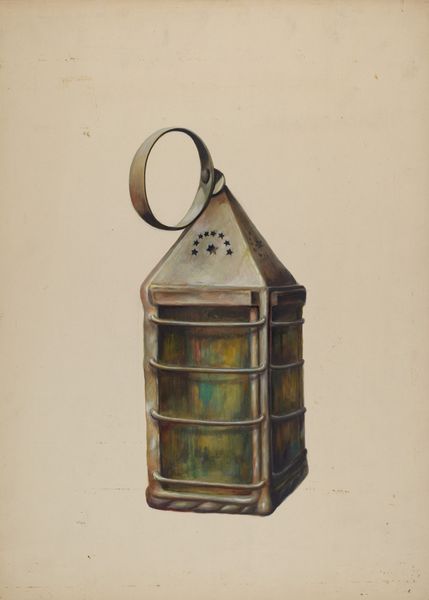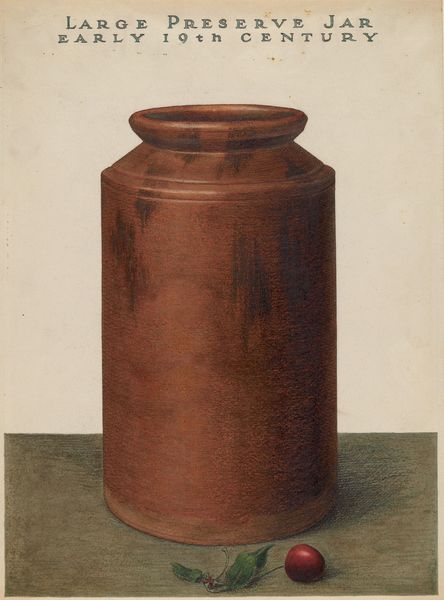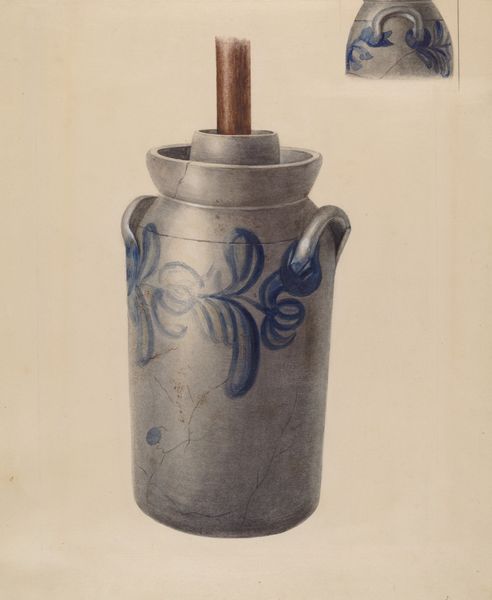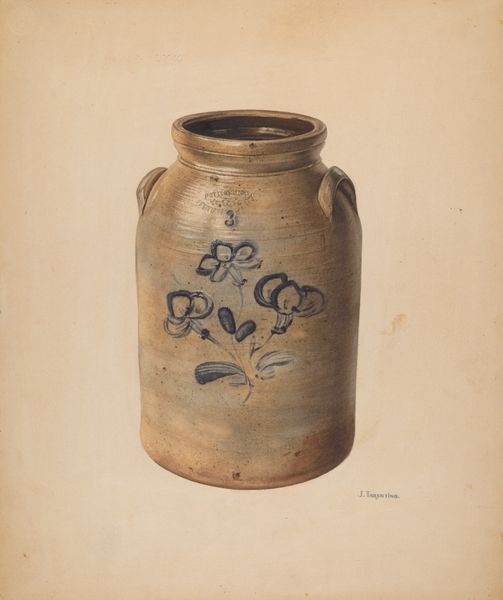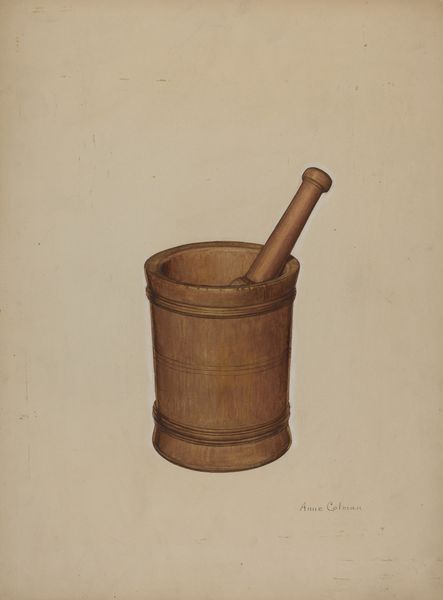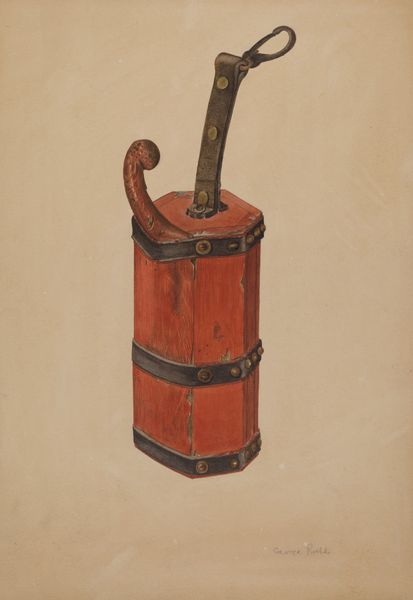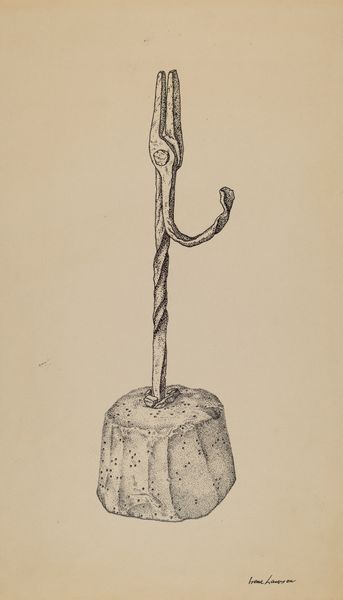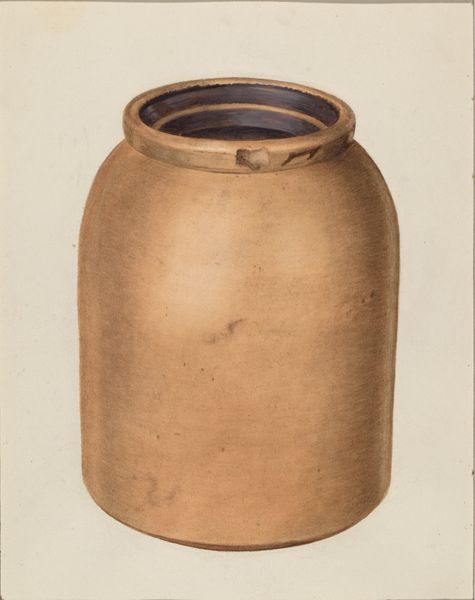
drawing, watercolor
#
drawing
#
watercolor
#
watercolor
Dimensions: overall: 45.3 x 33.2 cm (17 13/16 x 13 1/16 in.) Original IAD Object: 16" High 9" Dia(top) 30" Circum
Copyright: National Gallery of Art: CC0 1.0
Editor: This watercolor drawing, "Churn," was created around 1940 by Racine Vernier. It's a rather simple composition, almost austere. What jumps out at me is the muted palette and how utilitarian the object feels. What do you make of it? Curator: It speaks volumes about production and consumption, doesn't it? This isn't just a decorative object; it's a tool. Think about the labor involved in making butter at this time. The churning process, the physical work… It highlights the intimate connection between people and the objects they rely on. The handmade pottery itself would have involved specific skills and available materials. Editor: So, you're focusing on its functionality and the work that's implied by it, rather than the artistic value. Curator: Precisely. Even the slight imperfections, like that tiny crack near the bottom, tell a story of use and the lifespan of objects. These were integral to daily life; valuing the churn goes beyond mere aesthetic appreciation. The simple decoration actually amplifies its material presence by being visually minimal but distinct. Consider the alternative of elaborate painting! Editor: I hadn't really considered it that way before. I guess I was focusing more on the simple drawing style. But thinking about the churn's use really changes how I see it. Curator: It challenges traditional hierarchies, doesn't it? Vernier asks us to look at the ‘stuff’ of everyday life with an artist’s eye, prompting questions about what is art, and how labor, making and utility intertwine. It acknowledges craftsmanship within the every day. Editor: This was eye-opening. Looking at it now, I see less a drawing and more of a reflection of social history. Curator: Absolutely, and isn't it interesting how focusing on materials and production gives us new lenses through which to see and think about what 'art' can be?
Comments
No comments
Be the first to comment and join the conversation on the ultimate creative platform.
